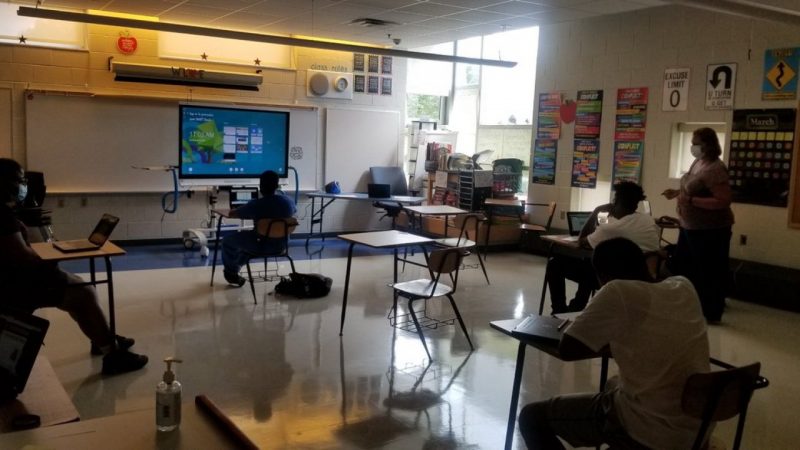Two days after schools reopened, parents remain apprehensive in the entire country regarding their children’s health.
Schools in Kenya’s capital, Nairobi, have, however, put adequate safety measures in place, such as checking body temperatures at the school gates, erecting points for washing hands, and ensuring both teachers and students wear their facemasks.
While visiting various schools, Khusoko has established that most classes remain aerated, desks have spaces between them, and school buses operate at half capacity as advised by the Ministry of Health and Education.
Although students seemed overjoyed, parents remain worried. The lack of ablution facilities, power, and water remains a worrying trend in most schools.
The Education Cabinet Secretary George Magoha has promised Kenyan schools that the government will donate 500,000 desks and ensure about three million students have masks.
How to keep your school-going child safe in the midst of the Covid-19 pandemic
- Ensure the availability of safe drinking water, toilets, or latrines at home remain clean at all times.
- Wash your hands thoroughly using soap and clean water frequently. In case you can’t access water and soap, use an alcohol based hand sanitiser, with at least 60% of alcohol.
- Model and teach acceptable hygiene practices for all your children.
- Monitor your child’s health, and in case they fall ill, let them stay at home.
- Collect and dispose of all waste safely.
- Sneeze and cough into your elbow, and avoid touching your nose, mouth, eyes, and face.
The World Health Organisation recommends that schools carry out the following precautions after reopening:
- Assess the impact of virtual teaching on learning outcomes.
- The number of Covid-19 infections among school staff and children, and school dropout trends once learning resumes.
- Effectiveness in tracing suspected cases, rapid testing, monitoring, and symptoms reporting.
WHO further advises that schools can adapt both fabric and surgical facemasks to prevent any transmission. This mainly applies to densely populated communities where social distancing isn’t achievable.
In some situations, it could include the school playground, during school assemblies, or break and lunch hours.
Used masks must be disposed of properly in line with both the local and national guidelines.
Risks associated with transporting students to and from school
The following measures should be put in place to limit the unnecessary exposure of staff members and school children to contracting the virus.
- Keep the windows of vans, buses, and all vehicles open at all times.
- Ensure physical distancing by ensuring only one child per seat. This calls for schools to get more buses.
- Provide safety measures for how students can commute to and from school when using private and public transport.
- Promote social distancing while enforcing hand and respiratory hygiene.




